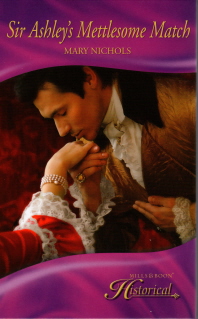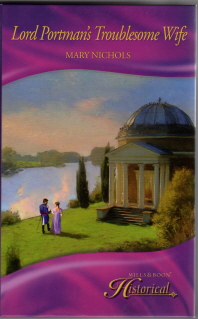Writing the Mini-series
When I wrote The Captain’s Mysterious Lady, it was a one-off, a change from writing Regency books. The Georgian era intrigued me for its lawlessness and the way crime was dealt with at the time.
 There was no regular police force. The streets were patrolled by the watch appointed by the parish and they often consisted of old men, no match for hardened criminals. Above them were unpaid constables, who were obliged to do their spell of duty whether they wanted to or not. They could arrest people caught in the act or brought to them by a complainant, but detective work was unheard of. The only real deterrent to crime was the harshness of the penalty once the perpetrator reached court. But that was often counter-productive; one might as well be hanged for a sheep as a lamb.
There was no regular police force. The streets were patrolled by the watch appointed by the parish and they often consisted of old men, no match for hardened criminals. Above them were unpaid constables, who were obliged to do their spell of duty whether they wanted to or not. They could arrest people caught in the act or brought to them by a complainant, but detective work was unheard of. The only real deterrent to crime was the harshness of the penalty once the perpetrator reached court. But that was often counter-productive; one might as well be hanged for a sheep as a lamb.
My hero, Captain James Drymore, searching for the murderers of his wife and intent on vengeance, is, for the first time since it happened, side-tracked into helping Amy Macdonald, a young lady he meets on a coach who is obviously in distress. She has witnessed a crime which has so traumatised her she cannot remember the details, though it gives her nightmares. In solving her mystery, James finds himself torn between his determination for revenge and his growing feelings for her. By the time his dilemma is solved, he has decided something must be done about solving crime. He consults Sir Henry Fielding who is trying to interest Parliament in the idea for what became known as the Bow Street Runners, but their scope was limited and did not include detection work. And they did not operate outside London unless, of course, they were on the track of a known criminal. James sets up a group of like-minded gentleman, all rich enough not to require payment for their services. Not for them the taking of bribes as other thieftakers were known to do. They do it for the love of adventure and to make the country a safer place to live.
My editor at Mills & Boon liked this book so much she suggested it could be the start of a mini-series about Georgian crime and asked me to think of a name for the group. I invented The Society for the Discovery and the Apprehension of Criminals which became known as The Piccadilly Gentlemen’s Club. I wrote four books initially: The Captain’s Mysterious Lady (shortlisted for the RNA’s Love Story of the Year award); The Viscount’s Unconventional Bride; Lord Portman’s Troublesome Wife and Sir Ashley’s Mettlesome Match. Each deals with a different member of the group and a different crime, in the solving of which each finds the love of his life. Needless to say the heroines all appear to be in league with the criminals, until events prove otherwise.
The books have proved very popular and after a break to write another Regency, I’ve written two more. The Captain’s Kidnapped Beauty. (Different captain; this time a sea-farer). Charlotte Gilpin, the daughter of a wealthy coachmaker has been kidnapped, but this is no simple kidnapping; the victim is taken on board a ship bound for Portugal and Alex must needs follow. His efforts to bring her safely back to England are thwarted by the lady herself who has her own ideas about whom to trust.
 All of these involved a certain amount of research. Quite apart from the usual period research like costume, manners, food and transport, I needed to know about the crime my hero was investigating. Murder and theft were fairly easy, but others were more interesting. For instance, Lord Portman was investigating coining. I found this subject fascinating. Forgers made new coins by covering base metal in a thin film of gold and using stolen or forged stamps to imprint the head and tail. Or they would file down the edges of gold coins and use the filings to make more coins. Then they needed a small army of people to pass them into circulation which they did by offering a sovereign to buy an item costing only a few pence. The crime became so widespread it was threatening to destabilise the currency of the country.
All of these involved a certain amount of research. Quite apart from the usual period research like costume, manners, food and transport, I needed to know about the crime my hero was investigating. Murder and theft were fairly easy, but others were more interesting. For instance, Lord Portman was investigating coining. I found this subject fascinating. Forgers made new coins by covering base metal in a thin film of gold and using stolen or forged stamps to imprint the head and tail. Or they would file down the edges of gold coins and use the filings to make more coins. Then they needed a small army of people to pass them into circulation which they did by offering a sovereign to buy an item costing only a few pence. The crime became so widespread it was threatening to destabilise the currency of the country.
Sir Ashley is investigating smuggling. This was big business in the south west and on the Norfolk coast, which was my particular concern. Smugglers were not the romantic vagabonds of popular myth. They were ruthless outlaws and thought nothing of ending the life of anyone who tried to thwart them. There were some truly big battles between smugglers and the excise men trying to arrest them. The communities in which they worked were either hand in glove or turned a blind eye. They dare not do otherwise.
In the Captain’s Kidnapped Beauty (short listed for the Rona Rose award, previously the Love Story of the Year) my research centred on coach-making as a business. Everyone who travelled any distance had to go by coach, whether it was a stage coach or one they owned or hired and good coachmakers (especially those in London) were the multi-millionaires of Georgian times. The aristocrats and wealthy citizens usually owned more than one coach, depending on the use to which they wanted to put it, much as the wealthy (and not so wealthy) today own more than one motor car. Long distance travel, especially on poor roads, needed a sturdy and comfortable vehicle. Coaches used in town could be lighter and more showy. And of course there were sporting vehicles for young bloods and sedate gigs for the more down to earth. And there were hundreds of hackney cabs for hire in the Capital. According to the Times Newspaper, the number of two and four wheeled carriages in England in 1787 was put at 16,000. My coachmaker is wealthy enough for someone to think of kidnapping his daughter.
I thought that might be the end of the series, but then I added one more, just to round the series off. The Commodore’s Inconvenient Wife, will be published next year. I’ve brought the action forward a generation and the hero is the son of the founder of society and most of the action for this takes place in France at the time of the Revolution. That time is a storehouse of ideas for the historical writer. You have only to think of Baroness Orczy and The Scarlet Pimpernel books and Dickens’ A Tale of Two Cities, one of my favourite Dickens books, if only for the first sentence and the last.
I’ve done linked books before, but this mini series has been by far the longest. One of the reasons for doing them is that a minor character becomes interesting enough to call for a book of their own. In this case it was a group of men and a string of crimes.
I have really enjoyed doing them.
If you want to know more about them take a look at my website: www.marynichols.co.uk
